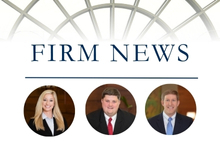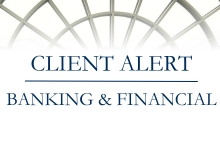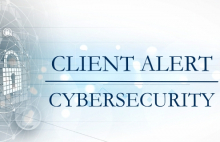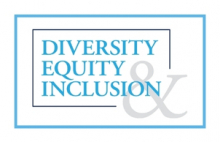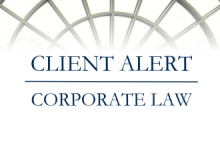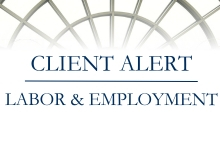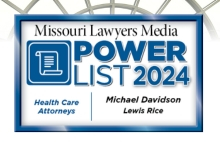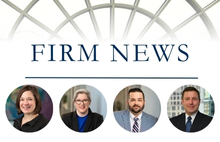New FAQs on Paycheck Protection Program (PPP) Loan Forgiveness Issued
August 5, 2020On August 4, 2020, the Small Business Administration (SBA), in consultation with the U.S. Department of the Treasury (Treasury), issued its “Frequently Asked Questions (FAQs) on PPP Loan Forgiveness” (the “FAQs on PPP Loan Forgiveness”), which is available here. SBA advises that borrowers and lenders may rely on the FAQs on PPP Loan Forgiveness as SBA’s interpretation, in consultation with Treasury, of the CARES Act, the Paycheck Protection Program Flexibility Act, and the interim final rules relating to the PPP (the “PPP Interim Final Rules”). For our prior alerts relating to PPP, click here.
The FAQs on PPP Loan Forgiveness is divided into several sections dealing with general forgiveness matters, payroll costs, nonpayroll costs, and reductions. Although the FAQs on PPP Loan Forgiveness does not answer all of the questions that borrower and lenders have had concerning PPP loan forgiveness, as applicable, it does provide helpful confirmations and additional guidance relevant for both borrowers and lenders.
Here are ten of the most helpful takeaways from the FAQs on PPP Loan Forgiveness:
- Forgiveness of Pre-Covered Period Costs. Payroll costs and nonpayroll costs incurred before but paid during the Covered Period are eligible for loan forgiveness.
- Payroll Costs. Payroll costs include all forms of cash compensation paid to employees, including tips, commissions, bonuses and hazard pay. For purposes of calculating cash compensation, borrowers should use the gross amount before deductions for taxes, employee benefit payments, and similar payments.
- Caps on Forgiveness of Owner Compensation. In addition to the specific caps described in the FAQs on PPP Loan Forgiveness, the amount of loan forgiveness requested for owner-employees and self-employed individuals’ payroll compensation is capped at $20,833 per individual in total across all businesses in which he or she has an ownership stake. For borrowers that received a PPP loan before June 5, 2020 and elect to use an eight-week Covered Period, this cap is $15,385. If an owner’s total compensation across businesses that receive a PPP loan exceeds the cap, the owner can choose how to allocate the capped amount across different businesses.
- Interest Payments on Unsecured Loans are Not Forgivable. Although borrowers are permitted to use PPP loan proceeds to pay interest on unsecured credit, such interest payments are ineligible for loan forgiveness.
- Modifications to Leases and Mortgages. Payments made on recently renewed leases or interest payments on refinanced mortgage loans are eligible for loan forgiveness so long as the original lease or mortgage existed prior to February 15, 2020.
- Transportation Costs. Covered utility payments, which are eligible for forgiveness includes “payment for a service for the distribution of … transportation,” not “transportation” costs more broadly, and only includes utility fees assessed by state and local governments.
- FTE Reduction for Seasonal Employers. A seasonal employer that elects to use a 12-week period between May 1, 2019 and September 15, 2019 to calculate its maximum PPP loan amount must use the same 12-week period as the reference period for calculation of any reduction in the amount of loan forgiveness.
- Clarifications on Salary/Hourly Wage Reduction. The FAQs on PPP Loan Forgiveness provides several examples of the calculation of the Salary/Hourly Wage Reduction, and clarifies that for purposes of calculating the Salary/Hourly Wage Reduction the borrower should only take into account decreases in salaries or wages (which excludes other forms of compensation, such as tips, commissions, bonuses and hazard pay).
- Clarification on FTE Reduction Exceptions in SBA Form 3508. When calculating the FTE Reduction Exceptions in Table 1 of the PPP Schedule A Worksheet on the Loan Forgiveness Application (SBA Form 3508 or lender equivalent), borrowers should include employees who made more than $100,000 in 2019 (those listed in Table 2 of the PPP Schedule A Worksheet).
- Group Health Insurance and Retirement Benefits. The following FAQs, presented in full, provide additional guidance on the treatment of group health care benefits (and related premiums) and retirement benefits for loan forgiveness purposes:
Question: What expenses for group health care benefits will be considered payroll costs that are eligible for loan forgiveness?
Answer: Employer expenses for employee group health care benefits that are paid or incurred by the borrower during the Covered Period or the Alternative Payroll Covered Period are payroll costs eligible for loan forgiveness. However, payroll costs do not include expenses for group health care benefits paid by employees (or beneficiaries of the plan) either pre-tax or after tax, such as the employee share of their health care premium. Forgiveness is not provided for expenses for group health benefits accelerated from periods outside the Covered Period or Alternative Payroll Covered Period.
If a borrower has an insured group health plan, insurance premiums paid or incurred during the Covered Period or Alternative Payroll Covered Period qualify as “payroll costs,” as long as the premiums are paid during the applicable period or by the next premium due date after the end of the applicable period. As noted, only the portion of the premiums paid by the borrower for coverage during the applicable Covered Period or Alternative Payroll Covered Period is included, not any portion paid by employees or beneficiaries or any portion paid for coverage for periods outside the applicable period. Loan Forgiveness Payroll Costs FAQ 8 outlines the rules that apply to owner health insurance.
Question: What contributions for retirement benefits will be considered payroll costs that are eligible for loan forgiveness?
Answer: Generally, employer contributions for employee retirement benefits that are paid or incurred by the borrower during the Covered Period or Alternative Payroll Covered Period qualify as “payroll costs” eligible for loan forgiveness. The employer contributions for retirement benefits included in the loan forgiveness amount as payroll costs cannot include any retirement contributions deducted from employees’ pay or otherwise paid by employees. Forgiveness is not provided for employer contributions for retirement benefits accelerated from periods outside the Covered Period or Alternative Covered Period. Loan Forgiveness Payroll Costs FAQ 8 outlines the treatment of retirement benefits for owners, which are different from this general approach.
The new FAQs on PPP Loan Forgiveness provides helpful guidance for borrowers and lenders that are now focused on applying for and reviewing loan forgiveness applications. Lewis Rice will continue to monitor these developments and provide updates to our COVID-19 Resource Center as needed. If you would like to sign-up to receive client alerts via email, you can do so here. If you have any questions about the implications and disruptions of COVID-19 on your business, please reach out to the author above or another member of the Task Force.
